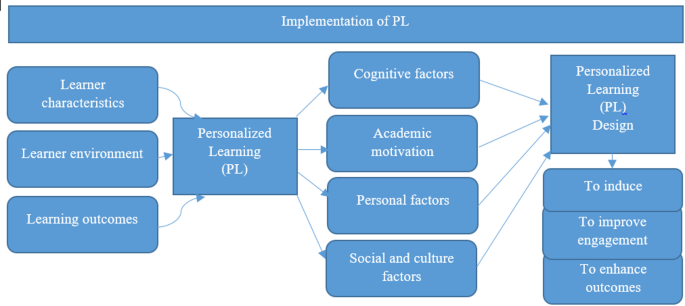Report on the Role of Language Education in Achieving Sustainable Development Goals
Introduction: Language Acquisition as a Core Component of Global Citizenship
This report examines the critical role of post-secondary language education in advancing the United Nations Sustainable Development Goals (SDGs). By reframing language study from a mere academic requirement to an essential tool for global engagement, higher education institutions can significantly contribute to fostering a generation of global citizens. The intentional pursuit of multilingualism directly supports key objectives outlined in several SDGs, most notably SDG 4 (Quality Education), SDG 10 (Reduced Inequalities), and SDG 16 (Peace, Justice, and Strong Institutions).
Alignment with SDG 4: Quality Education
Moving Beyond Academic Requirements to Foster Sustainable Lifestyles
The practice of treating language courses as a simple fulfillment of a general education requirement fails to leverage their full potential. A more intentional approach aligns with SDG Target 4.7, which calls for learners to acquire the knowledge and skills needed to promote sustainable development, global citizenship, and the appreciation of cultural diversity.
- Expanding Global Horizons: Challenging students to learn unfamiliar languages pushes them beyond their comfort zones, fostering personal growth and a broader worldview.
- Promoting Cultural Engagement: Language is an active form of cultural engagement that transforms academic study into a deeper connection with diverse communities.
- Fostering Inclusive Communities: Institutions that offer a wide range of language courses and admit a linguistically diverse student body are investing in a rich multilingual community, which is a key asset for achieving quality education for all.
Contributions to SDG 10 (Reduced Inequalities) and SDG 16 (Peace, Justice, and Strong Institutions)
Deconstructing Stereotypes Through Intercultural Communication
A significant barrier to reducing inequalities and fostering peace is the prevalence of cultural misunderstandings and stereotypes. Language education provides a direct pathway to dismantling these barriers by offering context to cultural norms that might otherwise be misinterpreted.
- Initial Linguistic Learning: The process begins with acquiring vocabulary and grammar, such as learning that “bonjour” is a form of greeting in French.
- Cultural Contextualization: Deeper learning reveals the cultural significance behind the language. For example, understanding that failing to say “bonjour” upon entering a shop in France is considered disrespectful provides crucial cultural context.
- Stereotype Deconstruction: This contextual understanding helps dismantle pervasive stereotypes (e.g., that French people are inherently rude) by revealing them to be rooted in cultural misinterpretation. This fosters a more nuanced and respectful view of other cultures, contributing to the goals of SDG 10.
Building Peaceful and Inclusive Societies
The intimate understanding of different cultures gained through language study is foundational to building peaceful and inclusive societies as envisioned in SDG 16. When individuals can connect language to cultural norms, they are better equipped to navigate a diverse world with empathy and respect.
- Enhanced Communication: Proficiency in multiple languages breaks down communication barriers that can lead to conflict and misunderstanding.
- Promotion of Peace: By fostering direct cultural interaction and mutual respect, language learning actively promotes a culture of peace and non-violence.
- Personal Transformation: The process changes an individual’s worldview, enabling them to make a more effective and considerate impact on the world.
Conclusion: Transforming Requirements into Opportunities for Global Impact
Higher education institutions and their students should view language courses as a vital opportunity for self-reflection, community connection, and personal growth. By investing time and energy into learning a new language, students are not only fulfilling a requirement but are also actively developing the skills necessary to advance the Sustainable Development Goals. This approach transforms language education into a powerful catalyst for building a more peaceful, equitable, and interconnected world.
1. Which SDGs are addressed or connected to the issues highlighted in the article?
-
SDG 4: Quality Education
The article is fundamentally about the quality and purpose of education beyond simple requirements. It argues for a transformative educational experience through language learning, which is a core component of quality education. The author critiques the perspective of seeing language classes as “needlessly difficult, work-heavy and even irrelevant requirements” and instead promotes them as “valuable opportunities to expand our cultural understanding.” This aligns with SDG 4’s goal to ensure inclusive and equitable quality education and promote lifelong learning opportunities.
2. What specific targets under those SDGs can be identified based on the article’s content?
SDG 4: Quality Education
-
Target 4.7: By 2030, ensure that all learners acquire the knowledge and skills needed to promote sustainable development, including, among others, through education for sustainable development and sustainable lifestyles, human rights, gender equality, promotion of a culture of peace and non-violence, global citizenship and appreciation of cultural diversity and of culture’s contribution to sustainable development.
This target is directly relevant as the article’s central theme is that language education is a primary vehicle for achieving global citizenship and appreciating cultural diversity. The author states that instead of just satisfying a requirement, the goal should be to “expand my global horizon.” The experience of learning French allowed the author to “draw real connections between language and cultural norms, thereby breaking down my previously stereotype-founded beliefs and building an intimate understanding of Francophone culture.” This process is a clear example of acquiring the skills for global citizenship and appreciating cultural diversity as outlined in Target 4.7.
3. Are there any indicators mentioned or implied in the article that can be used to measure progress towards the identified targets?
Target 4.7
The article implies indicators related to Indicator 4.7.1: Extent to which (i) global citizenship education and (ii) education for sustainable development are mainstreamed in (b) curricula.
- Existence of a mandatory language or intercultural communication requirement: The article explicitly mentions the “intercultural communication general education requirement” at Emory University. This policy serves as a direct indicator that the institution has mainstreamed education for global citizenship into its core curriculum.
- Number of languages offered: The article states that “Emory is investing in a rich multilingual community” by “offering courses in 17 non-English languages.” This number is a quantifiable indicator of the resources and opportunities available to students to engage in learning that promotes cultural diversity.
- Linguistic diversity of the student body: The article notes that the university admits a “linguistically diverse class of students.” This can be seen as an institutional indicator of fostering an environment conducive to intercultural understanding and global citizenship, where students can learn from each other’s backgrounds.
4. SDGs, Targets, and Indicators Table
| SDGs | Targets | Indicators |
|---|---|---|
| SDG 4: Quality Education | Target 4.7: Ensure all learners acquire knowledge and skills for sustainable development, including global citizenship and appreciation of cultural diversity. |
|
Source: emorywheel.com







